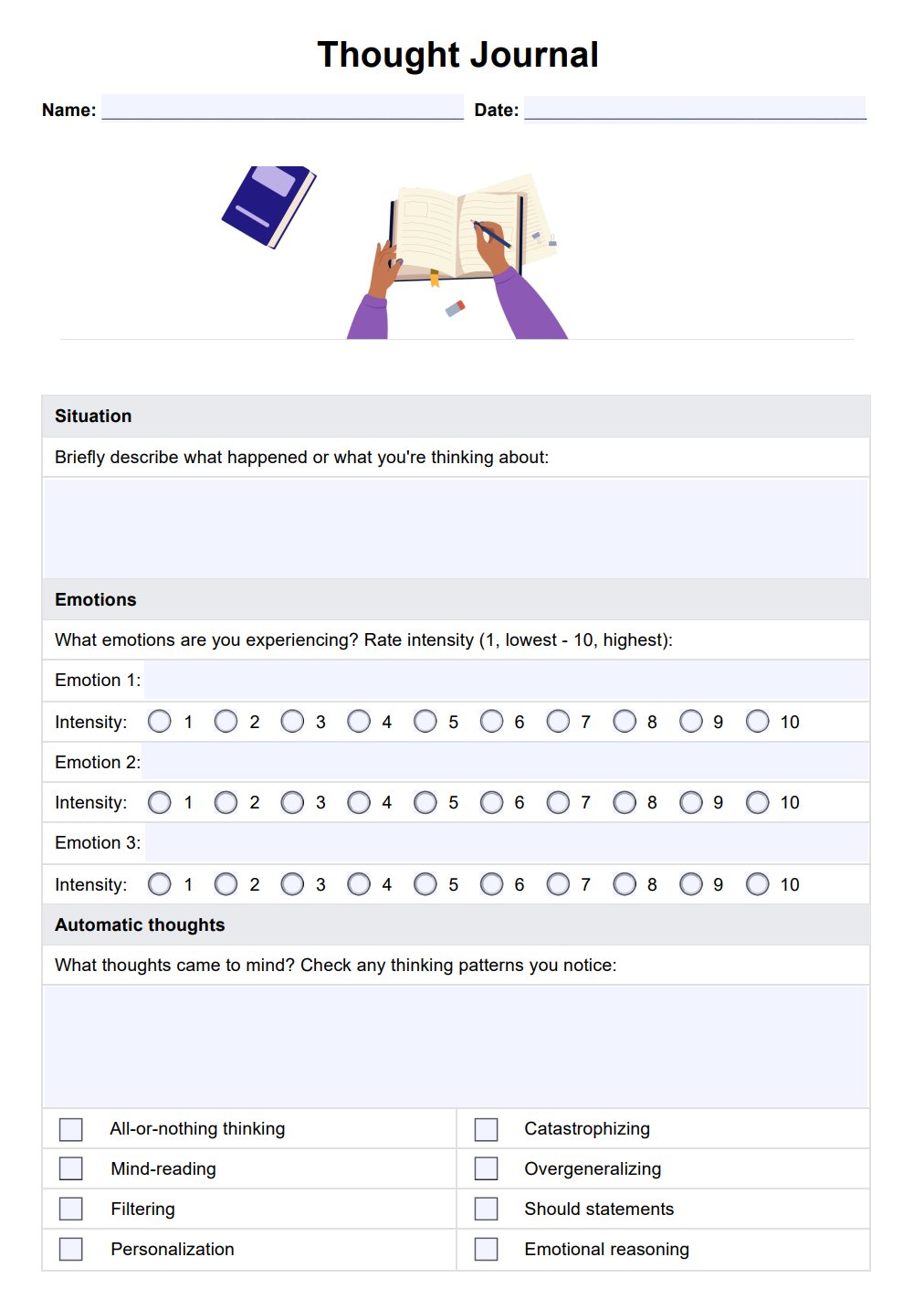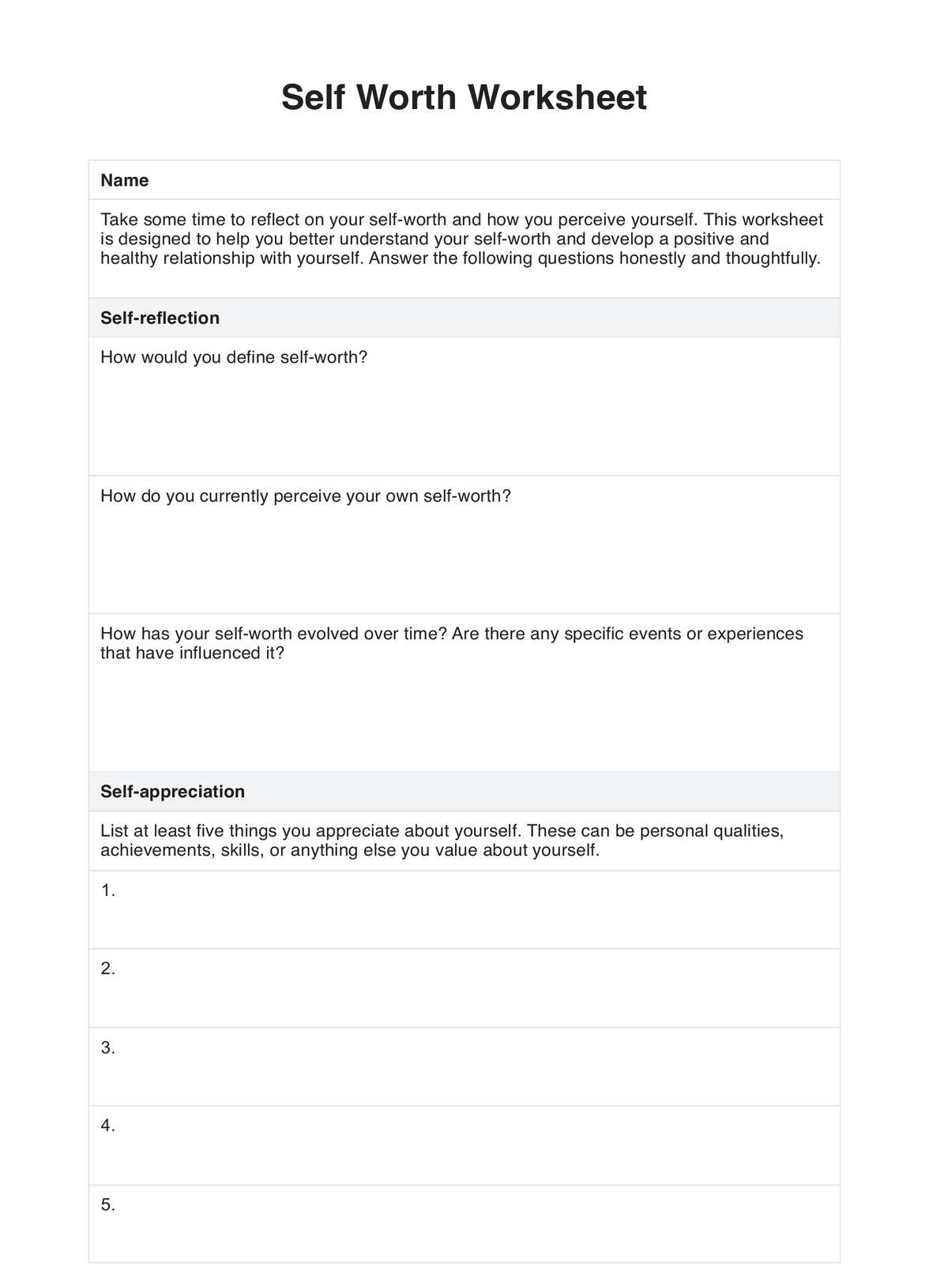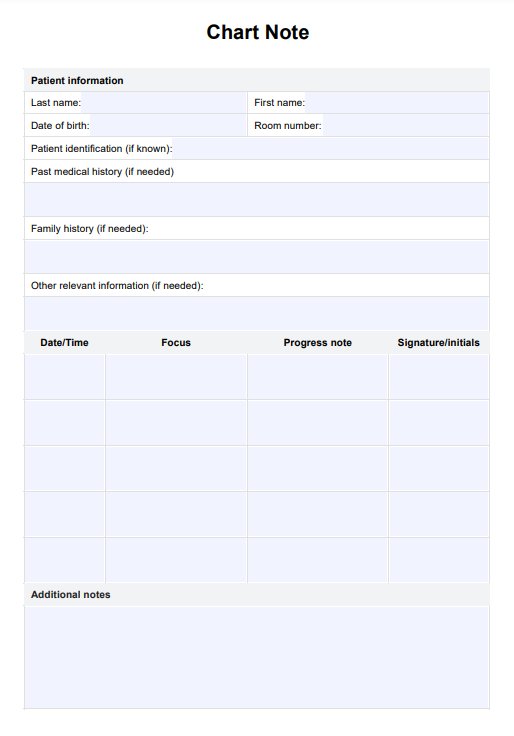Describe Your Derealization Experiences PTSD Worksheet
Explore the benefits of the Describe Your Derealization Experiences PTSD Worksheet. Enhance self-awareness, identify triggers & improve therapy sessions effectively.


What is Trauma and PTSD?
Trauma is the emotional response triggered by a distressing or life-threatening event that exceeds an individual's capacity to cope. It can trigger feelings of helplessness, reduce one's sense of self, and impair the ability to experience a full range of emotions. This can include experiences such as serious accidents, natural disasters, or exposure to war and violence.
Post-Traumatic Stress Disorder (PTSD) is a psychiatric disorder that may develop in individuals who have experienced or witnessed traumatic events. These events could be natural disasters, serious accidents, terrorist acts, war/combat, or situations where they have been threatened with death, sexual violence, or serious injury. Symptoms like flashbacks, nightmares, severe anxiety, and intrusive thoughts about the traumatic event source characterize PTSD.
Derealization is a potential symptom of PTSD. It is a subjective experience of unreality in oneself or the outside world. Individuals experiencing derealization may feel detached from their surroundings or themselves as if they are observers of their own lives rather than active participants. This disconnection can make the world seem unreal or distorted, leading to disorientation and distress.
Continual research and understanding of PTSD and its related symptoms, such as derealization, are critical for developing effective treatment strategies. For more information about managing and treating PTSD, you can refer to our comprehensive PTSD resources.
Describe Your Derealization Experiences PTSD Worksheet Template
Describe Your Derealization Experiences PTSD Worksheet Example
How to use the Describe Your Derealization Experiences PTSD Worksheet:
The Describe Your Derealization Experiences PTSD Worksheet provides an organized structure for individuals to articulate and examine their unique experiences with derealization. It can be invaluable in fostering self-awareness, identifying triggers, and formulating effective coping strategies.
Step 1: Preparation
Before you begin, finding a tranquil, comfortable space where you can concentrate without disruptions is essential. This will help you engage more deeply with the exercise and uncover significant insights about your derealization symptoms.
Step 2: Completing the Worksheet
The Describe Your Derealization Experiences PTSD Worksheet is designed with specific prompts that guide you through detailing your derealization experiences. These prompts will encourage you to delve into various aspects of your derealization episodes, such as their frequency, duration, triggers, and associated feelings. Be as detailed as possible, providing comprehensive responses to each prompt.
Remember, there are no right or wrong answers; this worksheet is purely a tool for self-exploration and understanding.
Step 3: Reflection
After completing the worksheet, set aside some time for reflection. Review your responses carefully, noting any patterns or recurring themes. This reflective process can yield valuable insights into your derealization experiences, helping you identify potential triggers and develop personalized coping mechanisms.
By regularly utilizing our printable Describe Your Derealization Experiences PTSD Worksheet, you can better understand your derealization symptoms and take proactive steps towards managing them more effectively.
Describe Your Derealization Experiences PTSD Worksheet:
The Describe Your Derealization Experiences PTSD Worksheet PDF is a comprehensive and user-friendly tool designed to aid individuals grappling with derealization symptoms, a joint facet of Post-Traumatic Stress Disorder (PTSD). This worksheet is a structured guide encouraging users to delve into their personal experiences with derealization, promoting greater self-understanding.
The worksheet provides directive prompts that facilitate a detailed exploration of the user's experiences. By engaging with these prompts, users can gain valuable insights into their derealization episodes, such as identifying triggers, understanding patterns, and acknowledging emotional responses. Articulating these experiences can also have therapeutic benefits, providing a cathartic outlet for feelings that may remain unexpressed.
Our Describe Your Derealization Experiences PTSD Worksheet PDF is much more than a simple guide; it's a powerful resource illuminating the often nebulous realm of derealization, fostering enhanced self-awareness and paving the way for effective coping strategies.
Download this Describe Your Derealization Experiences PTSD Worksheet Example:

When Would you use this Describe Your Derealization Experiences PTSD Worksheet?
The Describe Your Derealization Experiences PTSD Worksheet is a versatile tool employed in various contexts, depending upon the user's needs and circumstances.
For individuals grappling with Post-Traumatic Stress Disorder (PTSD) and experiencing derealization symptoms, the worksheet can serve as a powerful self-help tool. It's best utilized during calm, reflective moments when the user is mentally and emotionally prepared to delve into their experiences.
This could be during a quiet evening at home or as part of a morning routine. Describing one's experiences can promote self-awareness, provide therapeutic relief, and foster a deeper understanding of personal triggers and responses.
Healthcare professionals, such as therapists and counselors, can also benefit from incorporating the Describe Your Derealization Experiences PTSD Worksheet into their practice. It can be used as a structured tool during therapy sessions to guide discussions around derealization.
This can help patients articulate their experiences more effectively, facilitating a more nuanced understanding of their symptoms. Furthermore, the worksheet can be assigned as homework, providing patients with a means to continue their self-exploration outside therapy sessions.
The Describe Your Derealization Experiences PTSD Worksheet is most effective as part of a comprehensive approach to managing PTSD. Whether for personal introspection or within a therapeutic context, this worksheet can provide valuable insights into the complex manifestations of derealization, ultimately aiding in developing personalized coping strategies.
What are the Benefits of Using this Describe Your Derealization Experiences PTSD Worksheet?
Using our free Describe Your Derealization Experiences PTSD Worksheet can provide numerous benefits, particularly for individuals navigating the complexities of Post-Traumatic Stress Disorder (PTSD) and derealization symptoms. Here are some key advantages to consider:
Benefit 1: Enhanced Self-Awareness
By articulating and examining their derealization experiences, users can better understand their symptoms and how they manifest. This heightened self-awareness can be instrumental in managing symptoms more effectively.
Benefit 2: Identification of Triggers
Documenting experiences on the worksheet can also aid in identifying common triggers that precipitate derealization episodes. Recognizing these triggers is a crucial step in developing personalized coping strategies.
Over time, with consistent use of the worksheet, patterns may emerge that provide valuable insights into each individual's unique interplay of triggers and symptoms.
Benefit 3: Valuable Therapeutic Tool
For healthcare professionals, the Describe Your Derealization Experiences PTSD Worksheet can be invaluable during therapy sessions. It provides a structured framework for patients to express their experiences, facilitating more meaningful and focused discussions.
Furthermore, therapists can use the information gathered from the worksheet to tailor their therapeutic approach to each patient's specific needs.
While no specific research discusses the benefits of this particular worksheet, numerous studies highlight the value of similar therapeutic tools in managing PTSD and derealization symptoms. For instance, cognitive-behavioral therapies often incorporate such worksheets to help patients understand and manage their symptoms more effectively.
Our free Describe Your Derealization Experiences PTSD Worksheet offers myriad benefits, making it an essential resource for individuals dealing with derealization and healthcare professionals.
Commonly asked questions
It varies from person to person, but it could take 15 to 30 minutes on average.
The worksheet can provide a structured way to understand and express your experiences with derealization.
This worksheet is best used when you can reflect on your experiences without being overwhelmed.
While it's designed for individuals experiencing derealization due to PTSD, healthcare professionals may also find it helpful as a therapeutic tool for their patients.

.jpg)
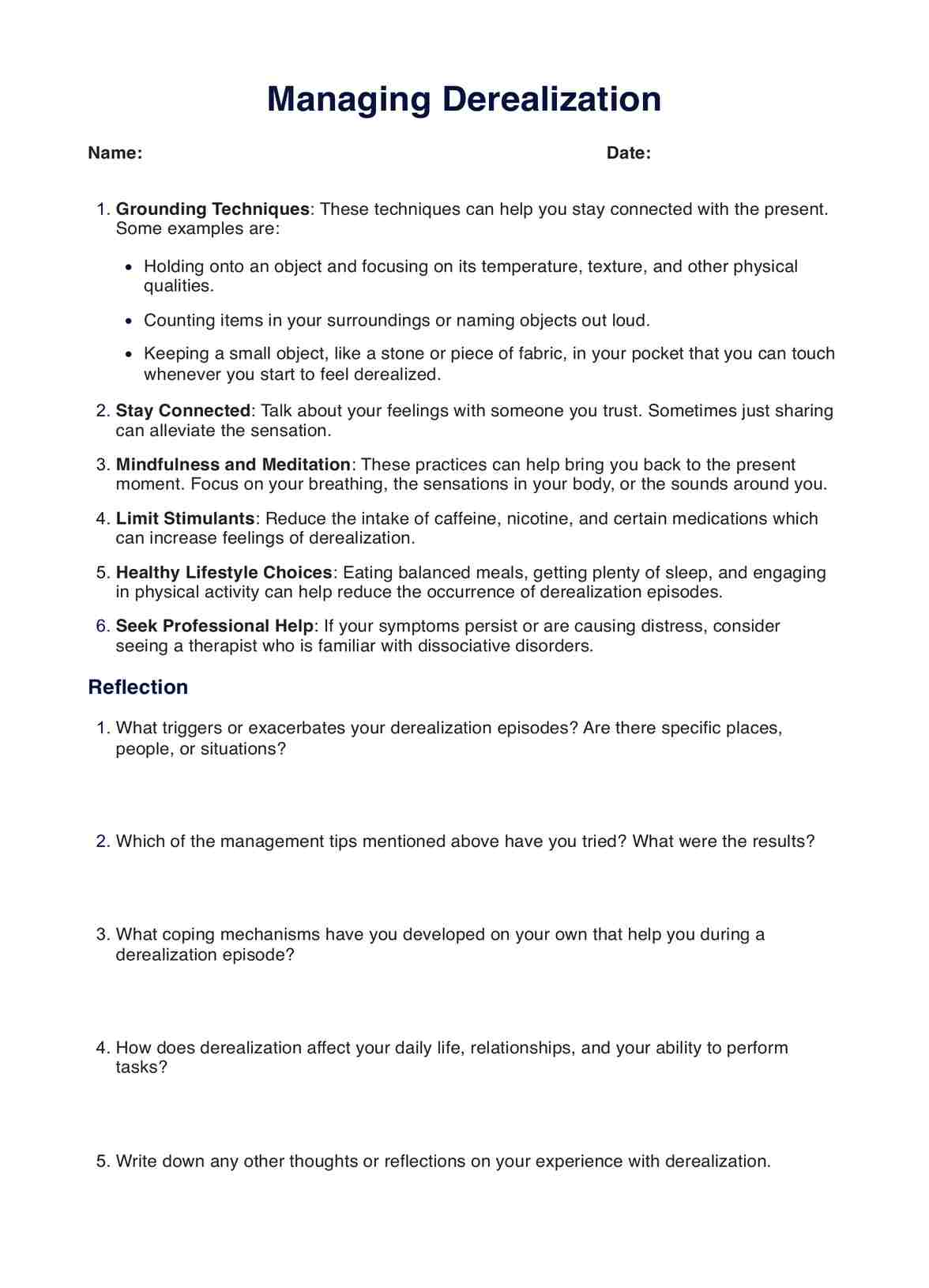
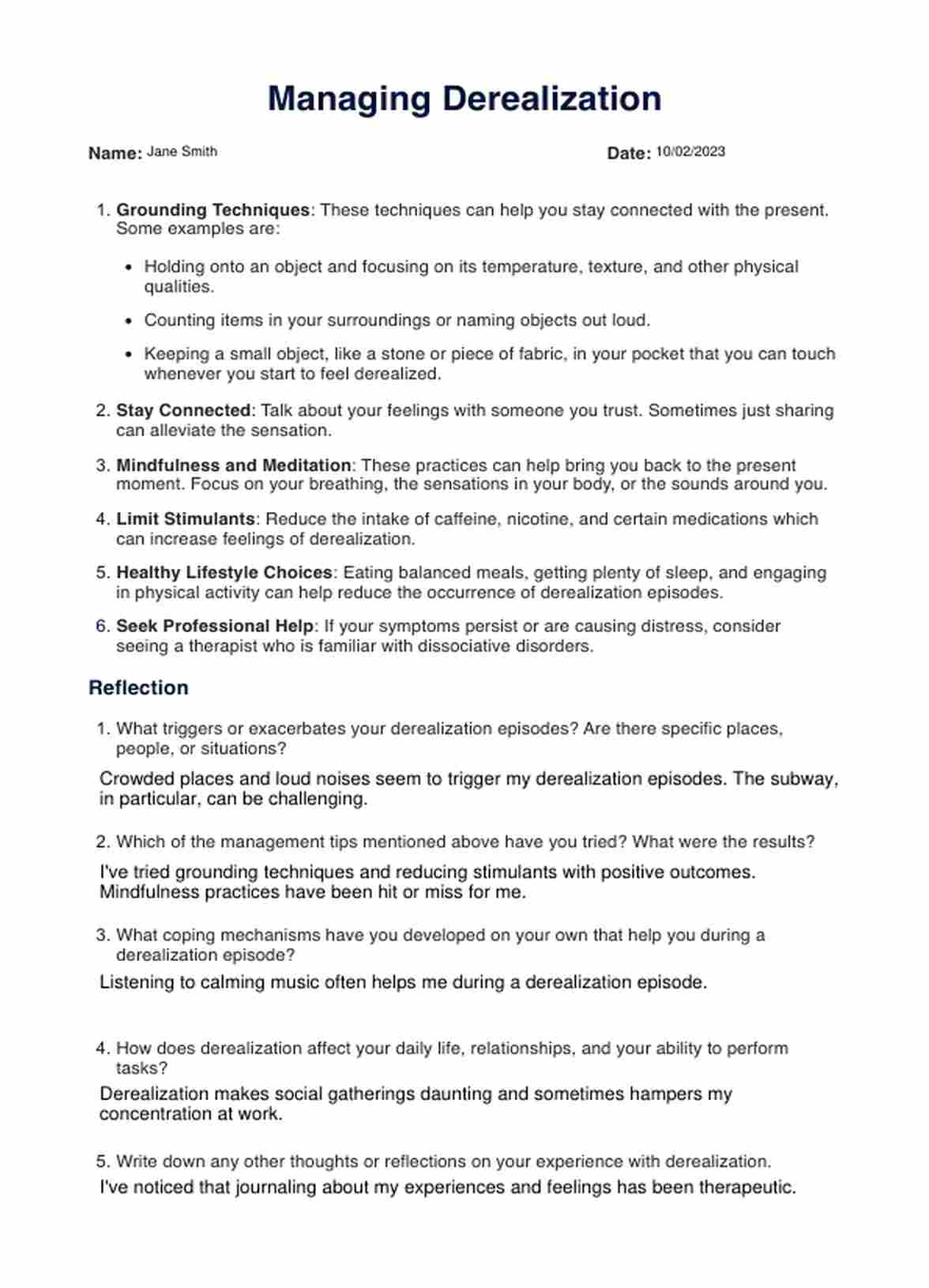















-template.jpg)




























































































